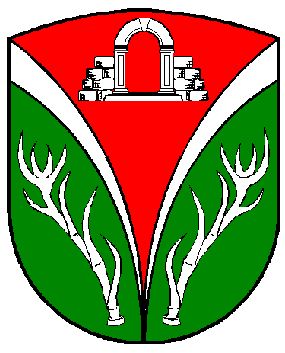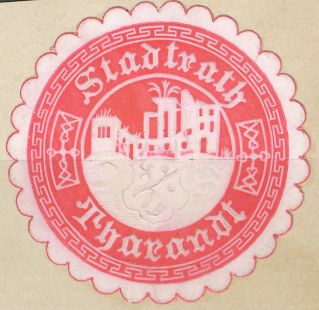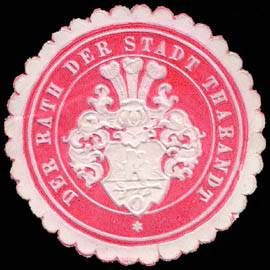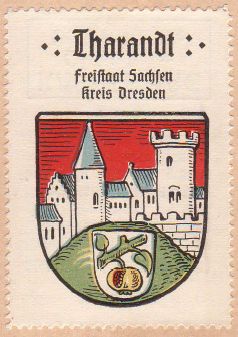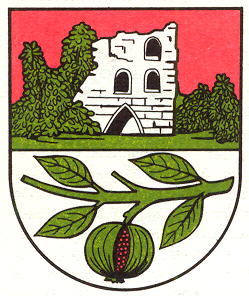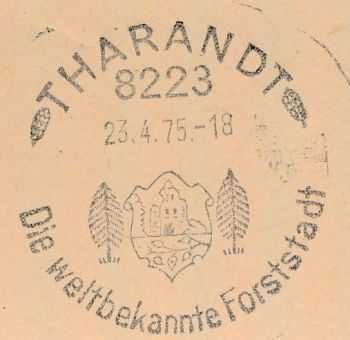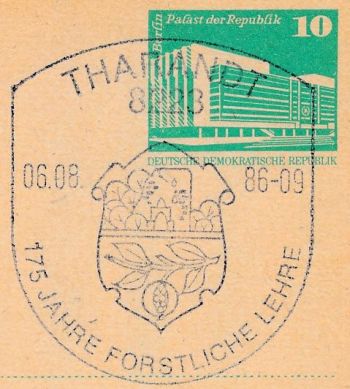Tharandt
THARANDT
State : Sachsen
District (Kreis) : Sächsische Schweiz-Osterzgebirge (until 2008 Weisseritzkreis)
Additions : 1999 Kurort Hartha (1926 Hintergersdorf, Spechtshausen; 1973 Fördergersdorf, Grillenburg), Pohrsdorf
| German | In Grün eine gestürzte eingeschweifte rote Spitze mit nach unten sich verjüngendem Silberbord, darin eine stilisierte symmetrische silberne Ruine, bestehend aus freistehendem romanischem Rundbogenportal mit Schwelle und beidseitigen halbhohen Mauerresten, vorne und hinten je eine nach außen gewendete aufgerichtete achtendige silberne Rothirschstange. |
| English | No blazon/translation known. Please click here to send your (heraldic !) blazon or translation |
Origin/meaning
The arms were adopted in 2002.
The arms symbolise the three former municipalities. The green colour refers to the Tharandt Forest and the point represents the Kerbtal valley in the municipality. The deer antlers symbolise the many animals in the forest as well as the forestry school in Tharandt. The building refers to the Tharandt castle ruins (see the previous arms below).
The city developed around the Tharandt castle from the 13th century, which is now in ruins. The pomegranate symbolizes that some grenades were found in the area in the 15th century. The name of the village was then also Granaten.
In 1609 Tharandt received city rights and the name was changed again. The only known seal dates from the 17th century and shows a city view and in the base a small shield with the pomegranate. These arms were still used in the 1920s, see below. During the mid 20th century the arms were changed and now show the castle ruins and the pomegranate.
| Seal from around 1900 |
Seal from around 1900 |
| The arms by Hupp in the Kaffee Hag albums +/- 1925 |
The arms until 1999 |
| Postal cancellation 1975 |
Postal cancellation 1986 |
Literature: Hupp, O: Kaffee Hag albums, 1920s; Benzing et al, 1984
